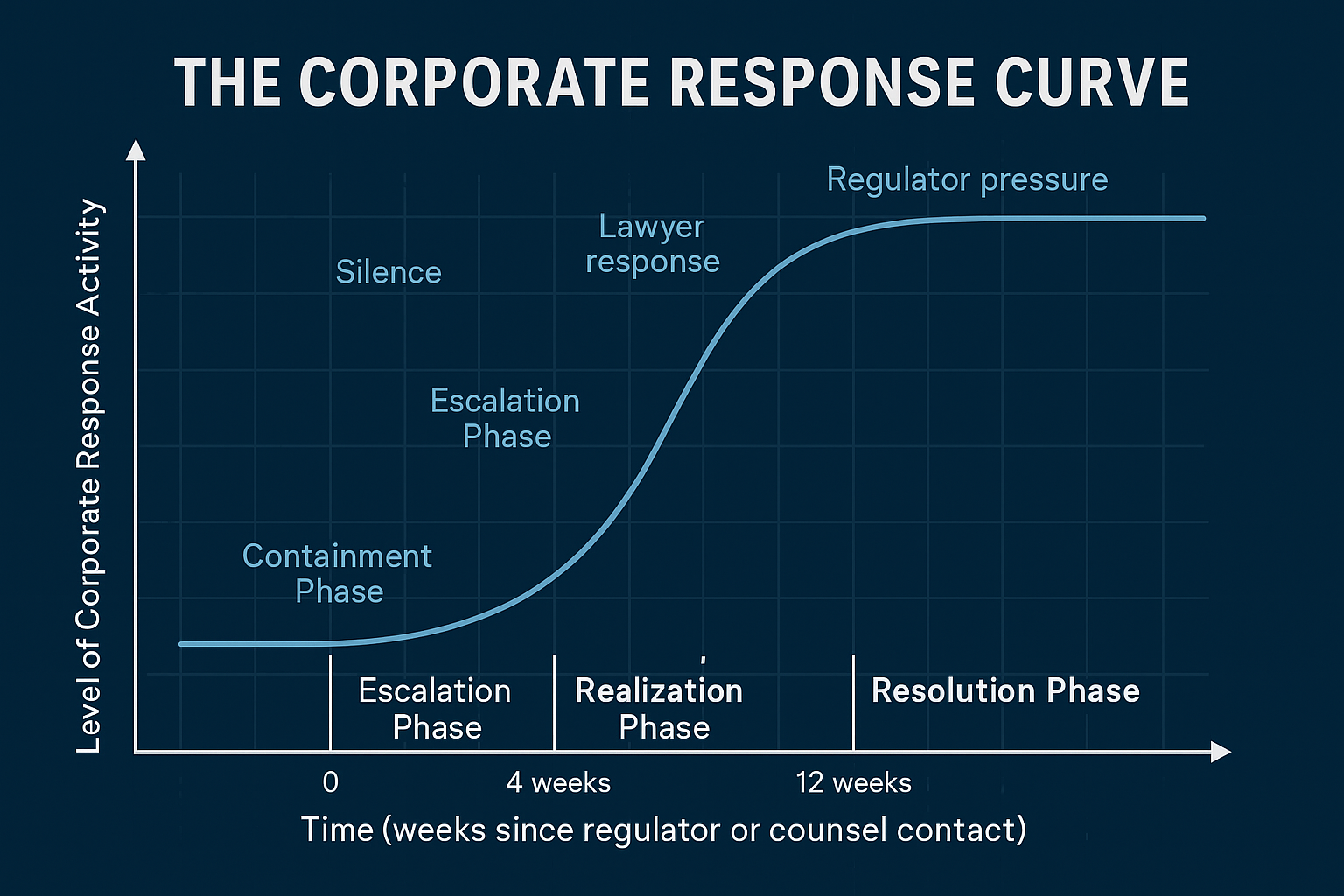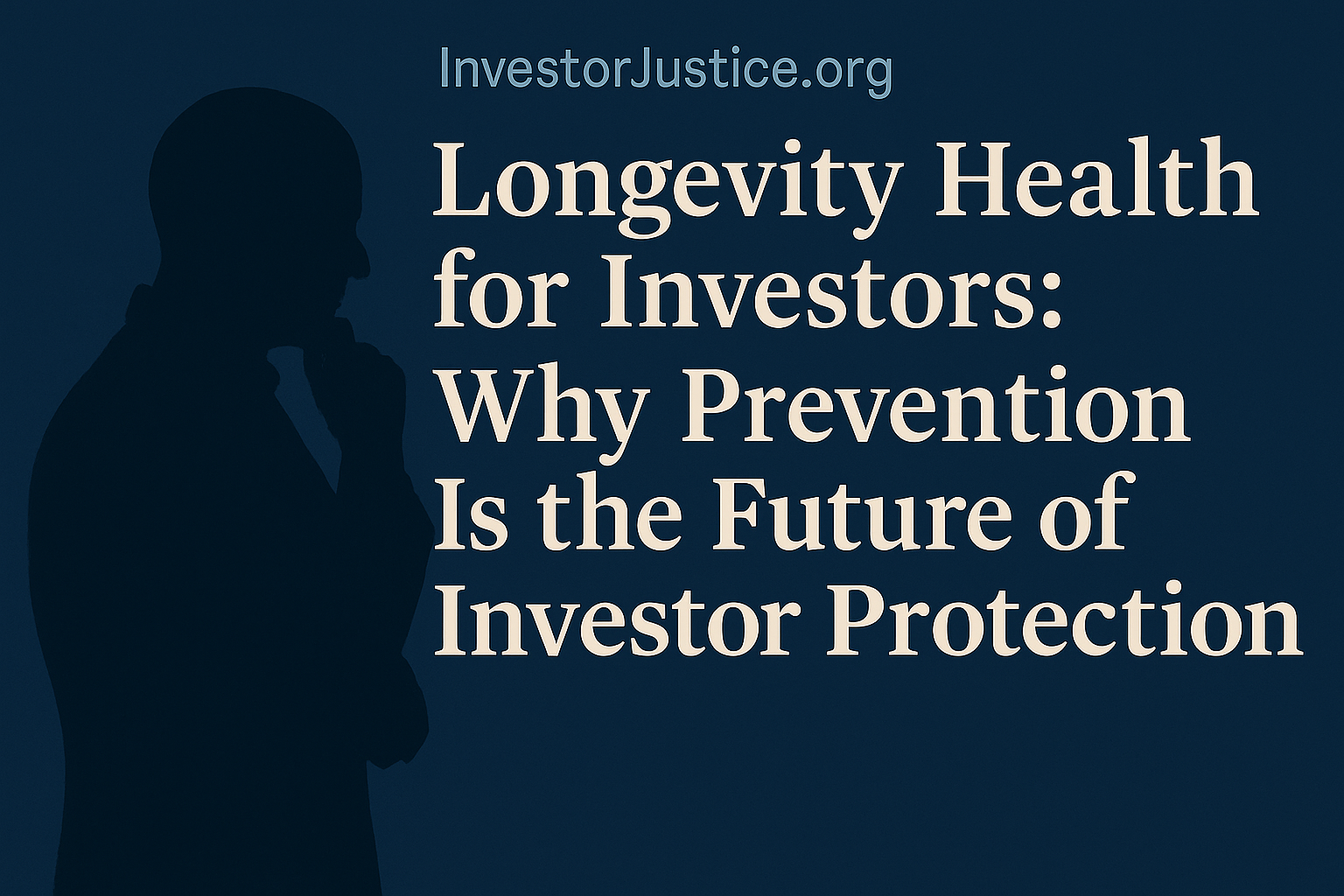Table of Contents
InvestorJustice Legal Reflection – October 2025
Executive Summary
Switzerland markets itself as the global gold standard for financial integrity — a haven of stability, prudence, and investor protection.
Yet beneath that reputation lies a systemic blind spot: FINMA’s “innovation-first” approach prioritizes institutional stability over individual accountability.
When unregulated or semi-regulated fintechs operating from Swiss soil collapse, the damage to ordinary investors is treated as collateral, absorbed in silence to protect the larger Swiss financial brand.
This article examines how that policy choice leaves investors — especially retirees — exposed to cascading harm with no meaningful recourse.
1. Institutional Protection vs. Investor Protection
FINMA’s legal mandate, under the Financial Market Supervision Act (FINMASA), is to ensure the “proper functioning of financial markets” and to protect “creditors, investors, and policyholders.”
But in practice, “protection” is interpreted systemically, not individually.
If a platform fails but the broader market remains intact, FINMA considers its mission fulfilled — even if thousands of investors lose their savings.
When Nexo and similar companies marketed high-risk, liquidation-based products from Switzerland under the guise of regulated credit lines, the risk wasn’t merely legal; it was systemic.
FINMA’s priority was containing contagion, not compensating those harmed.
2. The Jurisdictional Gray Zone
Switzerland’s regulatory ecosystem was not designed for hybrid fintech models.
Companies like Nexo operate through multi-jurisdictional shells — Swiss entities for credibility, foreign entities for liability.
- The Swiss entity enjoys access to Swiss reputation, infrastructure, and talent.
- The Cayman or offshore entity acts as the contractual counterparty, beyond Swiss enforcement.
When disputes arise, investors quickly discover that neither FINMA nor Swiss courts are accessible in practice.
The structure is deliberate: regulatory arbitrage packaged as innovation.
3. The “Innovation” Paradox
FINMA’s public messaging celebrates its support for “digital finance innovation.”
But innovation without supervision is not progress — it’s abdication.
By allowing unsupervised or partially supervised entities to market complex financial products from Swiss soil, FINMA created a moral hazard:
- Unregulated firms trade on Switzerland’s reputation.
- When things go wrong, Switzerland disclaims responsibility.
- Investors, often retirees, are left with irreversible losses.
This innovation paradox has quietly undermined the credibility that took decades to build.
4. Containment Over Accountability
In every major Swiss fintech collapse, a familiar pattern emerges:
| Phase | FINMA Priority | Investor Outcome |
|---|---|---|
| 1. Warning Signs | Preserve confidence | Silence or inaction |
| 2. Collapse | Contain contagion | Frozen assets |
| 3. Aftermath | Protect institutions | Investors absorb losses |
| 4. Narrative | “System remained stable” | Accountability avoided |
From FINMA’s standpoint, a contained collapse is a success — because it prevents damage to licensed banks or payment systems.
From the investor’s standpoint, it’s a humanitarian failure.
5. Collateral Damage as Policy
Regulators rarely use the phrase “collateral damage”, but that is the implicit tradeoff:
Protect the system, not the people in it.
- Thousands of investors can lose funds, but if UBS, Swissquote, and the payments system remain stable, FINMA calls it contained.
- Investor restitution is delegated to opaque civil processes, often unaffordable for the average victim.
- Case files vanish behind procedural confidentiality — effectively erasing accountability.
This quiet acceptance of distributed harm is not regulatory prudence.
It’s the normalization of financial casualties in the name of stability.
6. Why Transparency Is the Only Deterrent
InvestorJustice.org believes that transparency is the missing regulatory layer.
Public evidence of harm and documented regulator correspondence make it harder for agencies to hide behind “containment success.”
If investors can see, in real time, who was harmed, who responded, and who remained silent, reputational cost replaces regulatory inertia.
That is why every document, outreach, and evidentiary brief published here exists — not to undermine Swiss institutions, but to force accountability through exposure.
7. A Call for Honest Regulation
FINMA has an opportunity — and an obligation — to rethink its innovation agenda.
Encouraging new models is commendable; tolerating harm to retirees and retail investors is not.
Switzerland’s reputation was built on trust.
Trust cannot coexist with secrecy and selective supervision.
Until that gap is closed, the question remains:
Who protects the investor when innovation becomes collateral damage?
InvestorJustice.org
Transparency. Accountability. Reform.





